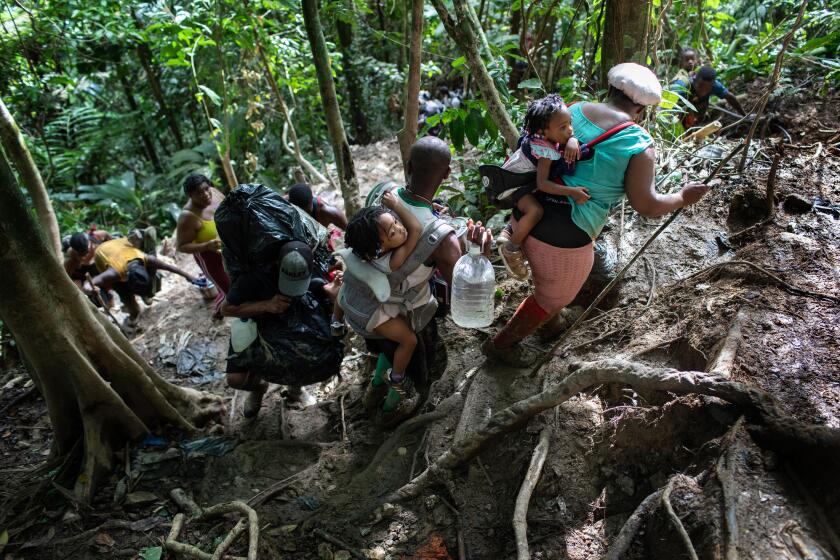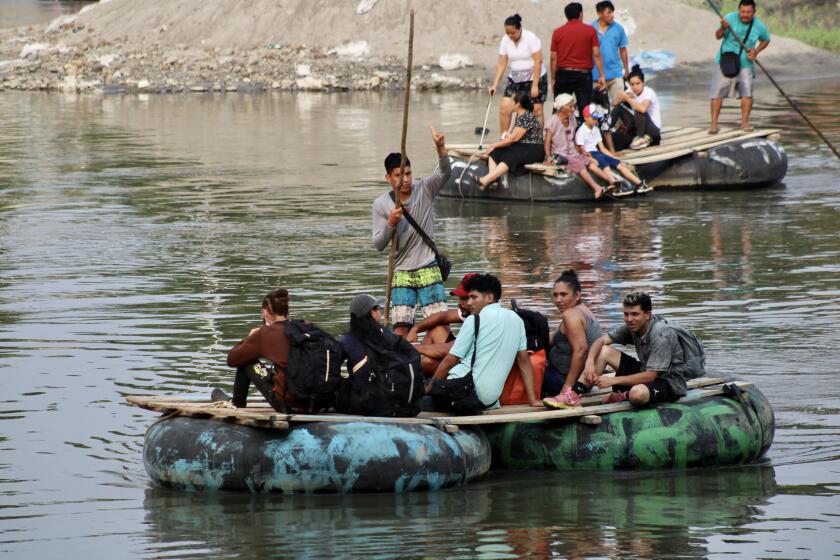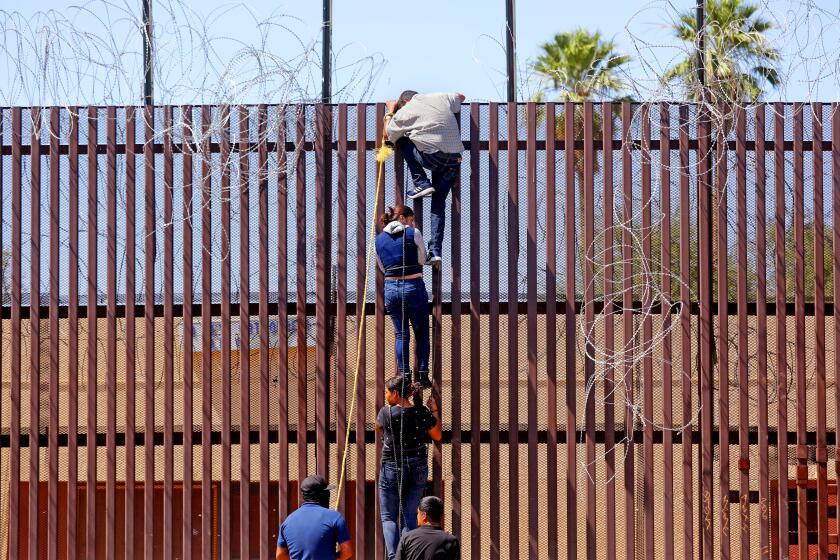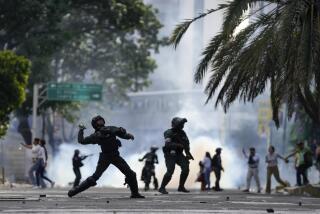How Panama plans to stop migrant-smuggling through the perilous Darien Gap
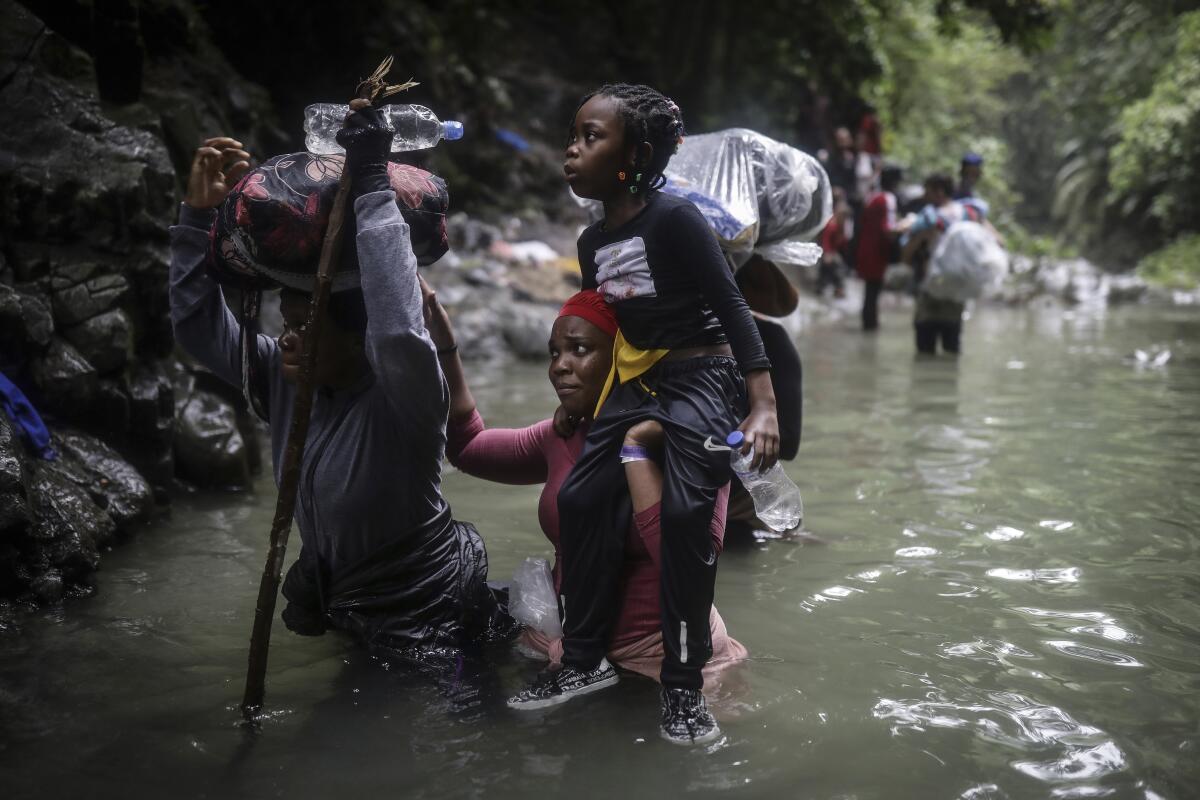
- Share via
NICANOR, Panama — Panama has unveiled a new effort to control illegal migration through the treacherous Darien Gap that spans its eastern border with Colombia.
Hundreds of thousands of migrants have risked the dangerous trek through the jungle in recent years, and the flow this year is on a record pace. Most of those who cross are trying to reach the United States.
In April, as the U.S. prepared to lift pandemic-related restrictions that had allowed authorities to turn back asylum seekers at the border, it announced together with Panama and Colombia increased efforts in the largely lawless Darien Gap.
Panama’s “Shield” campaign, announced Friday, is the first public display of those new efforts.
What is the Darien Gap?
The Darien Gap earned its name because it is the break in the Pan-American Highway connecting South and North America. Darien is the name of Panama’s easternmost province, which abuts Colombia.
It is composed of dense, roadless jungle, mountains and fast-flowing rivers. Migrants who have made the crossing regularly report being robbed and sexually assaulted and seeing bodies of others who did not survive along the way. Earlier this week, three suspected bandits died in a shootout with border police in Darien.
The crossing from Colombia can take anywhere from a few days to more than a week.
A look at one of the world’s most treacherous crossing spots for refugees
How many people are crossing?
Last year, nearly 250,000 people crossed the Darien Gap, nearly double the 133,000 who crossed in 2021, and a new record. That increase was driven largely by Venezuelans, who accounted for some 60% of the migrants crossing there last year.
In April, the United Nations warned that the unprecedented number of crossings to start the year suggested that some 400,000 migrants could cross this year. According to government data, nearly 170,000 migrants crossed the Darien in the first four months of the year, five times the number from the same period last year.
In early May, before the U.S. lifted the pandemic-era Title 42 asylum restrictions, Panamanian officials at the edge of the jungle registered the arrival of some 2,000 migrants in one day. Venezuelans continue to be the largest group crossing, but there are also Haitians, Chinese and Ecuadoreans, among others.
This week, Panamanian authorities reported that, with the arrival of the rainy season and swollen rivers, on one day about 790 migrants were registered. Expanded legal pathways offered by the U.S. and more punitive policies against those who try to enter the U.S. illegally also factor into migrants’ decision-making.
Following the expiration of Title 42, U.S.-bound migrants are still arriving at Mexico’s southern border to travel north, in a chaotic scene.
What is Panama’s “Shield” campaign?
On Friday, Panamanian security authorities announced that they would dedicate some 1,200 immigration agents, border police and members of the naval air service to what they said would be an effort by air, land and sea to take on organized criminal groups smuggling migrants, drugs and guns through the Darien jungle.
There will be more aerial patrols with U.S.-donated helicopters and more specialized border police units to root out gangs operating along the shared border with Colombia. It is the first public sign of the coordinated efforts promised by Panama, Colombia and the United States in April.
U.S. Homeland Security Secretary Alejandro Mayorkas met then with the foreign ministers of Panama and Colombia in Panama City.
“Recognizing our shared interest and responsibility to prevent the risk to human life, disrupt transnational criminal organizations, and preserve the vital rainforest, the governments of Panama, Colombia, and the United States intend to carry out a two-month coordinated campaign to address the serious humanitarian situation in the Darien,” the governments said in a joint statement.
Panama is framing the effort to gain control of its border as a national security issue targeting organized crime groups. For the migrants making the crossing, it plans an informational campaign to combat the misinformation peddled by smugglers.
South American migrants were unexpectedly flown from New Mexico to Sacramento in a move likely to inflame the immigration debate.
What challenges do authorities face in Darien?
It will not be easy for authorities to stem the flow of migrants through the Darien Gap. The route has become well-established, with enterprising locals, especially on the Colombian side, selling gear — tents, boots, food and even porter service. Additionally, for those with the resources, there are smugglers who offer a more personalized, guided crossing.
Some of Colombia’s armed groups, principally the Gulf Clan, are involved in migrant smuggling and run very sophisticated operations.
Oriel Ortega, director of Panama’s border police, said Friday that its intelligence indicated that the Gulf Clan was the organization most involved in and profiting from smuggling migrants through the Darien.
Panamanian Security Minister Juan Manuel Pino said that authorities have identified three main smuggling sea routes and two land routes between Colombia and Panama and will focus resources in those areas, though he recognized that criminal groups can be expected to then open new routes.
More to Read
Sign up for Essential California
The most important California stories and recommendations in your inbox every morning.
You may occasionally receive promotional content from the Los Angeles Times.
